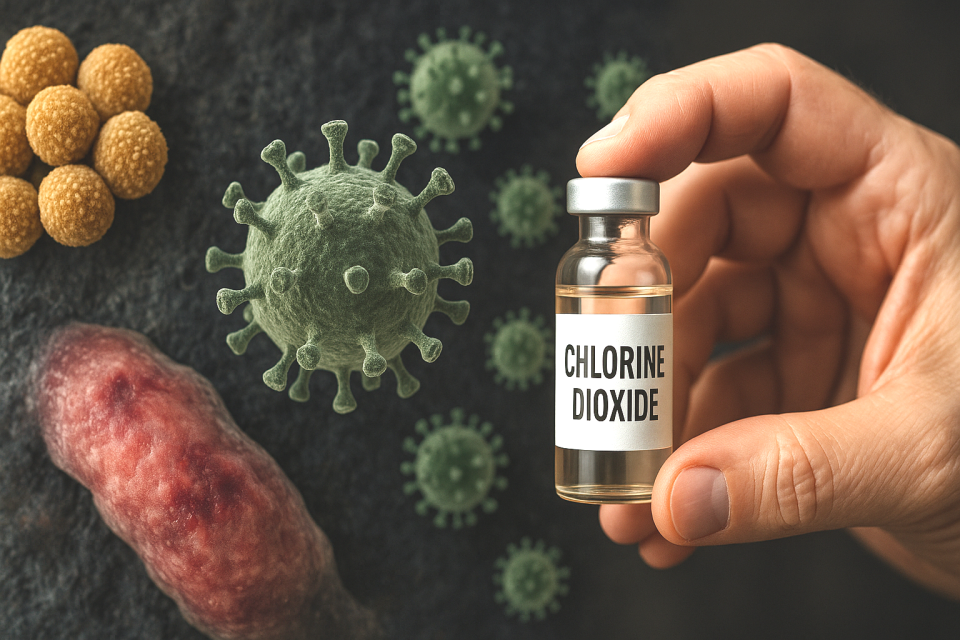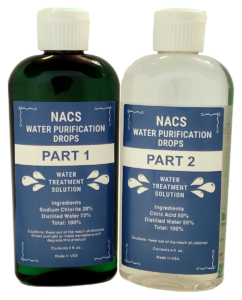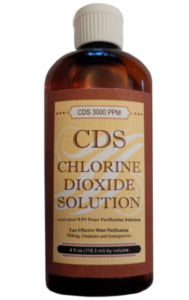In a world where antibiotic-resistant bacteria, deadly viruses, and “superbugs” are evolving faster than modern medicine can keep up, many are left wondering: What happens when the drugs stop working? Diseases like MRSA (methicillin-resistant Staphylococcus aureus), staph infections, flesh-eating bacteria, and even persistent variants of COVID-19 are not just headlines—they’re rapidly growing public health threats. Yet amid the fear and frustration, a controversial yet compelling candidate has quietly entered the conversation: chlorine dioxide (ClO₂).
 Staph infections, especially those caused by MRSA, have exploded in both hospital and community settings. These bacteria have evolved to resist almost every class of antibiotics. In the U.S. and Europe, MRSA is responsible for at least 50,000 deaths per year. In some countries, MRSA is responsible for nearly 50% of all Staphylococcus aureus bloodstream infections.
Staph infections, especially those caused by MRSA, have exploded in both hospital and community settings. These bacteria have evolved to resist almost every class of antibiotics. In the U.S. and Europe, MRSA is responsible for at least 50,000 deaths per year. In some countries, MRSA is responsible for nearly 50% of all Staphylococcus aureus bloodstream infections.
The growing threat isn’t just limited to bacteria. Mutating viruses, such as emerging COVID-19 variants and viral hemorrhagic fevers, are challenging vaccine effectiveness and pharmaceutical solutions.
So, what if the solution wasn’t another synthetic drug, but rather a simple oxidative molecule that’s been around for over 200 years?
From Industrial Disinfectant to Biomedical Breakthrough
Once dismissed as mere “bleach” by its critics, chlorine dioxide (ClO₂) has proven itself much more than a cleaning agent. Used widely in water treatment, food sanitation, and hospital disinfection, this molecule is now under the microscope as an alternative supplement with broad-spectrum antimicrobial power.
A recent peer-reviewed study published in the Journal of Bacteriology & Mycology: Open Access highlights chlorine dioxide’s exceptional ability to neutralize MRSA, one of the most infamous and deadly bacterial strains plaguing healthcare systems today.
Key Findings from the Study:
- Conducted by Dr. George Georgiou of the Da Vinci BioSciences Research Centre in Cyprus.
- MRSA exposed to chlorine dioxide at concentrations as low as 0.5 ppm showed 99.99% inhibition of growth.
- All concentrations tested, ranging from 0.5 ppm to 5 ppm, for durations from 30 seconds to 30 minutes, effectively eradicated MRSA colonies in vitro.
“In these in vitro experiments, the efficacy of chlorine dioxide against MRSA has been shown consistently, with growth inhibition of 99.99% – 100% in even the smallest concentrations,” wrote Dr. Georgiou.
Why Does Chlorine Dioxide Work So Well?
Chlorine dioxide works as an oxidizer, meaning it disrupts the cell walls and internal structures of pathogens via oxygen release, without harming healthy tissues. Unlike antibiotics, which poison bacteria in specific ways (often easily resisted), ClO₂ kills by oxidation, a method microbes have a much harder time adapting to.
It also penetrates biofilms, the slimy protective layers that microbes form to shield themselves from drugs and immune responses, something antibiotics often fail to breach.
A Track Record Beyond MRSA
Chlorine dioxide’s antimicrobial spectrum doesn’t stop at staph infections:
- Malaria: Anecdotal reports and field trials (especially in Africa and Latin America) suggest rapid reversal of malaria symptoms following ClO₂ administration.
- HIV: Experimental and anecdotal evidence indicate reduced viral load in HIV-positive individuals, though formal clinical trials are still needed.
- COVID-19: Some independent physicians and researchers have observed promising outcomes with ClO₂ protocols, though these remain under intense scrutiny.
In one study, chlorine dioxide was shown to inactivate 99.9% of viruses within 15 seconds at concentrations ranging from 1 to 100 ppm, demonstrating its rapid effectiveness against even the most stubborn viral agents.

Despite these promising outcomes, mainstream medicine and public health agencies continue to condemn chlorine dioxide as unsafe for internal use. Their basis? Primarily, it’s classification as an “industrial disinfectant.”
Yet, millions of people around the world, many of them desperate and without access to traditional healthcare, report improved health outcomes from ClO₂ protocols, especially when pharmaceuticals have failed or aren’t available. And importantly, independent researchers like Dr. Georgiou are not financially backed by pharmaceutical companies, which allows them to pursue their studies without conflict of interest, but also without institutional protection.
The science is compelling. The testimonials are overwhelming. The resistance from regulatory bodies is intense.
It is time to demand high-quality, unbiased clinical trials that explore the therapeutic use of chlorine dioxide in fighting today’s most dangerous pathogens. With proper dosing, oversight, and scientific inquiry, chlorine dioxide may become not just a treatment but a revolutionary medical tool, capable of challenging the supremacy of antibiotics and synthetic antivirals.

Chlorine Dioxide: A Simple Solution to Complex Problems
In a world overrun with invisible invaders, drug-resistant bacteria, evolving viruses, and mutating pathogens, humanity may need to look to the past to move forward.
A humble molecule first discovered in 1811 by Sir Humphry Davy, chlorine dioxide could prove to be one of the most powerful disease-fighting tools of the modern age. Whether accepted or denied by mainstream science, the growing evidence cannot be ignored.
And while skepticism is healthy, suppression is not. Especially when lives are on the line and superbugs continue to gain ground.
Sources & Further Reading:
- Georgiou, G. (2024). The Efficacy of Chlorine Dioxide Against MRSA In Vitro. Journal of Bacteriology & Mycology: Open Access. [Available online]
- Ogata, N. & Shibata, T. (2008). Protective effect of low-concentration chlorine dioxide gas against influenza virus infection. Journal of General Virology.
- University of Almería (2020). Toxicology Evaluation of Chlorine Dioxide in Animal Models.
- Kálcker, A. L. (2021). Forbidden Health: The Hidden Power of Chlorine Dioxide.
- Humble, Paris (2022). Healthy Alternative Chlorine Dioxide Uses: Non-pharmalogical health restoration.
- Independent researcher archives and anecdotal case studies (See: MMS, Genesis II Church records, field trials in Africa and Latin America)